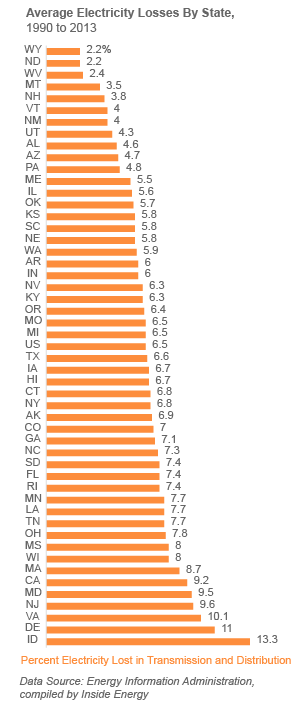
Source Doc is here
Posted on 01/31/2020 10:16:31 AM PST by cann
Russian scientists have published a concept for a new kind of nuclear reactor. It’s a hybrid reactor, meaning it includes both fusion and fission, and it runs almost exclusively on thorium instead of more volatile uranium. In computer simulations, the research team found its novel design of an “energy-generating blanket” could still produce high power with a relatively small footprint and not much radioactive waste.
There’s a lot to like about this design, including how it offers interesting middle-ground solutions in terms of fuel, reactor configuration, and safety. Thorium is one of the most abundant elements of its kind—more abundant than tin, which is so common and accessible that it’s one of the classical elements of alchemy. Uranium isn’t the rarest element in nature, but little of it is “available” in a common or affordable sense. If uranium were an asset, it would be a long-term CD with a penalty for convenient withdrawal.
In the hybrid thorium setup, thorium-plutonium pellets power a high-temperature, gas-cooled reactor. The paper doesn’t specify the gas, but existing coolants include carbon dioxide and helium. Gas-cooled reactors have always offered a way for reactors to make power using un-enriched, regular old uranium, making it more affordable and accessible to more countries. A hybrid reactor running on thorium could fill the same space.
A traditional nuclear reactor runs in critical state, but the hybrid thorium reactor instead operates in near-critical state. Instead of having a chain of neutrons produced by critical reaction, neutrons continue to pour in from a separate source. A magnetic field inside the reactor holds the powerful cloud of ionized gaseous deuterium plasma, which is the fusion part of the fusion-fission reactor. From there, neutrons spill out into a part the scientists call an “energy-generating blanket.” It’s this blanket where subcritical fission takes place, using neutrons from inside the plasma-filled magnetic tube.
The reactor itself is relatively small, with the plasma chamber measuring 12 meters in length. And by combining a fusion reaction with a fission one, the reactor maximizes efficiency. Compared with developing technology like the tokamak, this design could be much more down to earth, with less ramp-up time to performance and less volatility once it’s engaged.
Get back when they actually make a working sustainable fusion reactor
All it needs is some unobtanium to work.
What’s your source regarding the lack of long-lived fission products?
This hybrid concept actually runs on U-233, which is fissile and can be used for nuclear weapons. Thorium-232 captures a neutron and U-233 is produced.
I recall looking into fusion-fission reactors back in the 1970s.
That would be great if true and we could get real cheap and carbon free energy. But because the word “nuclear” is in it, the envirowhackos will shoot it down.
Are they going to build it in Chernobyl?
Geez, I found my deed whatever you call it.over 6272640 of us own a square foot of the place. As kids we were rather gullible.
Caddis the Elder
If something like this actually worked, it would probably be good for neighborhood power. A huge percentage of electrical power in the grid is lost during transmission. If we could decentralize that, and have the generation facilities located close to those who would be consuming the power, much less actual generating capacity is actually needed than the standard grid.
I have a little problem with Popular Mechanics being the messenger for such a revolutionary process in nuclear science.
I basically remember the magazine for articles about making my bike sound like a motorcycle with only a clothes pin and a piece of cardboard.
(For those of you too young to know what a high tech device a clothes pin was at the time, maybe Google will have it)
Knew a guy back in the 1990s. He lived East of a N-plant (now closed), and took advantage of being supplied a radiation meter. Small counter-top device.
Being an outdoorsy guy, he was shocked when the delivery tech pulled the familiar glass mantle out of a lead envelope to calibrate the meter.
Coleman stopped using thorium upwards of at least 15 years ago.
So unless the Coleman mantle’s really old, or you hit some store selling cheap Chinese replacement crap, you might not find anything.
” A huge percentage of electrical power in the grid is lost during transmission”
About 1%.
“Being an outdoorsy guy, he was shocked when the delivery tech pulled the familiar glass mantle out of a lead envelope to calibrate the meter.”
Source check, not calibration.
Staple for the production of rubber-band Guns.
“A magnetic field inside the reactor holds the powerful cloud of ionized gaseous deuterium plasma, which is the fusion part of the fusion-fission reactor. From there, neutrons spill out into a part the scientists call an “energy-generating blanket.” It’s this blanket where subcritical fission takes place, using neutrons from inside the plasma-filled magnetic tube.”
Um.... If they can get controlled deuterium fusion working, why do they need a thorium fission reaction?
scale?
According to this page, it's considerably more than that.
Distribution Sector considered as the weakest link in the entire power sector. Transmission Losses is approximate 17% while Distribution Losses is approximate 50%.
Paging Pons and Fleischman, please pick up the courtesy phone in the lobby.

Source Doc is here
Those are transmission AND distribution. You would still have distr8bution losses.
Disclaimer: Opinions posted on Free Republic are those of the individual posters and do not necessarily represent the opinion of Free Republic or its management. All materials posted herein are protected by copyright law and the exemption for fair use of copyrighted works.